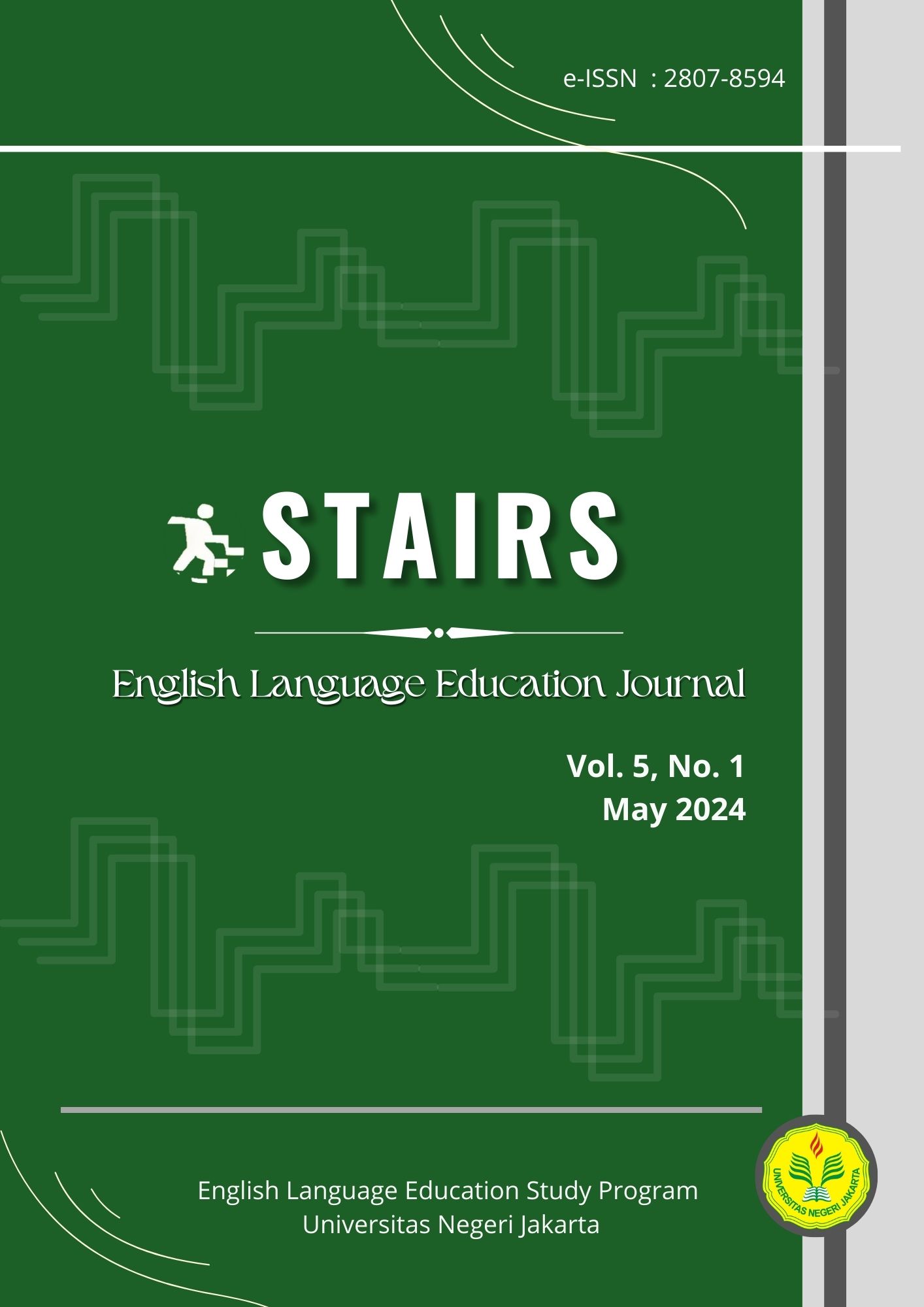The Communicative Language Strategies of CEFR in TikTok Video
DOI:
https://doi.org/10.21009/stairs.5.1.3Keywords:
CEFR, Communicative Language Strategies, Language learning materials, TikTokAbstract
As a widely established scale a standardized assessment of language competency in Europe as well as worldwide, CEFR provides a clear baseline for assessing language ability. However, its representation in videos on TikTok, as one of the most potential language learning platforms remained unexplored. This study seeks to examine communicative language strategies linked with the CEFR in TikTok videos. Using a qualitative method and ATLAS.ti software, the data were collected from 200 videos using the hashtags #learnenglish and #communicationstrategies. Production was recognized as the most common communication strategy, with planning appearing in 43 videos. Moreover, videos in the B1 level were the most frequent, appearing in 86 videos. The results suggest that a systematic strategy, as seen in TikTok videos, requires a well-designed learning plan that includes regular intervals for listening, speaking, reading, and writing practice. Future studies should encourage educators to adopt these practices, to promote successful language education.
References
Afip, L.A., Hamid, M. O., & Renshaw, P. (2019). Common European Framework of Reference for Languages (CEFR): insights into global policy borrowing in Malaysian higher education. Globalization, Societies and Education, 17(3), 378–393. https://doi.org/10.1080/14767724.2019.1578195
Amor, M. I., Tinedo-Rodríguez, A. J., & Osuna-Rodríguez, M. (2023). The Interaction between Language Skills and Cross-Cultural Competences in Bilingual Programs. Languages, 8(3). https://doi.org/10.3390/languages8030181
Aririguzoh, S. (2022). Communication competencies, culture, and SDGs: effective processes to cross-cultural communication. Humanities and Social Sciences Communications, 9(1). https://doi.org/10.1057/s41599-022-01109-4
Berger, A. (2020). Specifying Progression in Academic Speaking: A Keyword Analysis of CEFR-Based Proficiency Descriptors. Language Assessment Quarterly, 17:1, 85-99, DOI: https://doi.org/10.1080/15434303.2019.1689981
Brunfaut, T., & Harding, L. (2019). International language proficiency standards in the local context: Interpreting the CEFR in standard setting for exam reform in Luxembourg. Assessment in Education: Principles, Policy & Practice. 27(2). 1-17. https://doi.org/10.1080/0969594X.2019.1700213
Council of Europe. (2020). Common European Framework of Reference for Language: earning, teaching, Assessment. Companion Volume with New Descriptors. https://rm.coe.int/cefr-companion-volume-with-new-descriptors-2018/1680787989
Creswell, J. W., & Creswell, J. D. (2018). Research Design: Qualitative, Quantitative, and Mixed Methods Approaches. H. Salmon, C. Neve, M. O’Heffernan, D. C. Felts, & A. Marks (Eds.; Fifth). SAGE Publications.
Díez-Bedmar, M. B., & Byram, M. (2019). The current influence of the CEFR in secondary education: teachers’ perceptions. Language, Culture and Curriculum, 32(1), 1–15. https://doi.org/10.1080/07908318.2018.1493492
Foley, J. A. (2019). Issues on Assessment using CEFR in the Region. In Journal: Language Education and Acquisition Research Network Journal, 12(2).
Hazar, E. (2021). The influence of the CEFR in Turkish national curriculum. African Educational Research Journal, 9(2), 551–561. https://doi.org/10.30918/aerj.92.21.087
Ika, R. M, & Santosa, I. (2023). The Existence of CEFR Interaction Competence of Communicative Language Activities in TikTok. STAIRS: English Language Education Journal, 4(2).
Kiger, M. E., & Varpio, L. (2020). Thematic analysis of qualitative data: AMEE Guide No. 131. Medical Teacher, 42(8), 846–854. https://doi.org/10.1080/0142159X.2020.1755030
McNamara, T., Morton, J., Storch, N., & Thompson, C. (2018). Students’ Accounts of Their First-Year Undergraduate Academic Writing Experience: Implications for the Use of the CEFR. Language Assessment Quarterly, 15(1), 16–28. https://doi.org/10.1080/15434303.2017.1405420
Natova, I. (2021). Estimating CEFR reading comprehension text complexity. The Language Learning Journal, 49(6), 699–710. https://doi.org/10.1080/09571736.2019.1665088
Nishimura-Sahi, O. (2022). Policy borrowing of the Common European Framework of Reference for Languages (CEFR) in Japan: an analysis of the interplay between global education trends and national policymaking. Asia Pacific Journal of Education, 42(3), 574–587. https://doi.org/10.1080/02188791.2020.1844145
North, B., & Piccardo, E. (2020). Common European Framework of Reference For Languages: Learning, Teaching, Assessment Companion volume. Language Policy Programme Education Policy Division Education Department, Council of Europe: 13.
Syafiq, A.N., Rahmawati, A., & Oktaviana, T. (2021). Increasing Speaking Skill through YouTube Video as English Learning Material during Online Learning in Pandemic Covid-19 Article History. In Elsya : Journal of English Language Studies, 3(1). http://ojs.journal.unilak.ac.id/index.php/elsya
Phoolaikao, W., & Sukying, A. (2021). Insights into CEFR and Its Implementation through the Lens of Preservice English Teachers in Thailand. English Language Teaching, 14(6), 25. https://doi.org/10.5539/elt.v14n6p25
Schneider, S. (2020). A critical analysis of the role of intercultural communication in the Common European Framework of Reference for Languages (CEFR) Companion Volume (2020). Journal of Spanish Language Teaching, 7(2), 193–199. https://doi.org/10.1080/23247797.2020.1864112
Uygur, E. O. (2021). Yabancı Dil Öğreniminde B1 Bariyerini Aşmak Aralıksız Öğrenme Tekniği. Journal of Research in Turkic Languages, 3(2), 71–79. https://doi.org/10.34099/jrtl.323
Zaleckis, K., Grazuleviciute Vileniske, I., Vitkuviene, J., Tranaviciutė, B., Dogan, H. A., Sinkiene, J., & Grunskis, T. (2019). Integrating Content Analysis Into Urban Research: Compatibility With Sociotope Method and Multimodal Graph. SAGE Open, 9(1), 2158244019840115. https://doi.org/10.1177/2158244019840115



